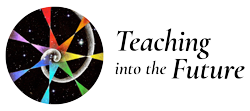I am a teacher. I have taught kindergarten, elementary, junior high and high school students and throughout these years I began to see the need to address contemporary children and youth in engaging, enlivened imaginative ways. Modern children are alert, precocious and quick to ascertain the value of their learning and their time. To this end the question centered on this: “How can teachers create diverse instructional strategies that invite active student participation in their learning?”
As I reflected on my own struggle to do this I discovered that part of the answer was to invite an ‘unknown element’ into the classroom. In my research I investigated the concept that interconnected components such as the influence of the teacher, developmental essentials of adolescents, student engagement related to the needs of the times, and intuiting the unknown as teacher presenters, allow for teaching to flourish when creativity, choice, imagination and constructivism nourish the adolescent spirit in the classroom.
To enable students to become more involved in their learning, I had to change as a teacher. I had to let go of knowing how everything was going to unfold in the lesson. I made the wonderful discovery that participatory learning means balance between the teacher’s presentation of the entire lesson and opportunities for students to participate in the lessons. The potential for deep connection between teacher and students emerges and engaged, participatory learning occurs. This interactive process nourishes the burgeoning identities of students and deepens their learning.

